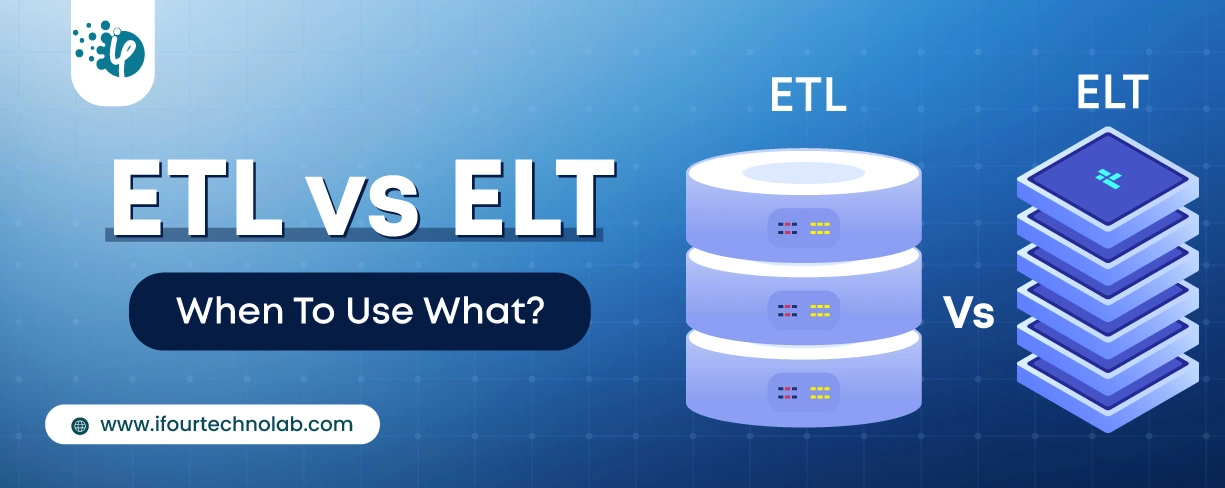How to Do Forecasting in Power BI (Steps & Accuracy Metrics)
Remember our last guide - Power BI forecasting? It revealed things that truly blocks accuracy, both structural and situational. Now it's time to take the next step. Knowing Power...
Listening is fun too.
Straighten your back and cherish with coffee - PLAY !

Security has always been a major concern. Your company spends millions on cybersecurity tools, and guess what? You’re still vulnerable.
When you're working in the cloud, especially with platforms like Microsoft Azure, and you're pushing code through CI/CD pipelines, the risks multiply fast. That’s why security must be built-in from the start, not bolted on at the end.
And that’s where Shift Left Security approach comes in.
Shift Left Security is a modern DevSecOps approach that integrates security checks early in the Software Development Life Cycle (SDLC). Instead of fixing vulnerabilities after deployment, it focuses on detecting and preventing risks during development. This proactive strategy reduces time, cost, and manual effort while ensuring secure applications before they reach production.
Why it matters:
By embedding security from the start, teams avoid expensive rework and improve scalability without re-architecting systems. Shift Left Security stands out because it prevents vulnerabilities from ever reaching live environments.
CI/CD stands for Continuous Integration / Continuous Deployment.
CI (Continuous Integration): Developers frequently merge code into a shared repository.
CD (Continuous Delivery/Deployment): Code is automatically tested and deployed to production.
Azure CI/CD Pipeline is a cloud-based platform (built by Microsoft for Azure DevOps or GitHub Actions) that helps automate this entire process.
Because Azure CI/CD already automates your development pipeline, there's no better place than this, where you can embed early security checks that run frequently.
This ensures:
Secure your access management wit Microsoft Entra ID consulting services
Code Scanning: Automatically check for insecure code or secrets in GitHub or Azure Repos.
Dependency Checks: Scan open-source libraries for known vulnerabilities.
Security Testing: Run automated security tests during build and release stages.
Policy Enforcement: Block deployments if critical security issues are found.
Shifting security to the left in DevOps results in the following benefits for a CTO.
Reduced Risk: Fewer security breaches and compliance issues.
Faster Delivery: Catching issues early avoids delays later.
Cost Savings: Fixing bugs early is much cheaper than fixing them in production.
Better Collaboration: Developers, security, and operations work together from the start.
You don’t need to overhaul everything. Start small. Here is how you can shift your security to the left in Azure Cloud:
Shift Left Security helps you catch issues before they become problems. Simple!
In the SDLC process, you’ve added everything like encryption, two-factor authentication, and even fingerprint scans. Yet, your Cloud application isn’t secure enough. The reasons are anonymous.
This points out the need for a secure solution, emphasizing the importance of Shift Left Security. With Shift left security, you can make your modern software effective.
Want secure low code apps built quickly? Our Power Apps consulting can help.
Why Shift Left Security Matters?
"You know, as a CTO, making things faster and safer in tech is essential. So, with this shift left security approach, you can:
Vinod Satapara, CTO & Director of iFour Technolab, shares his views on the importance of Shift Left Security.
“So, you know most of the teams usually check for security issues at the end i.e., right before launch. But after adopting the Shift Left model with Azure CI/CD Pipeline deployment, this got simplified.
It brings security checks way earlier, like during coding and testing.
That means bugs and vulnerabilities get caught sooner, which saves time, money, and a lot of stress.
It also helps everyone in the team (developers, testers, and even security experts) work together better throughout the whole SDLC process.”
Shift Left Security adoption helps your software development team work faster while keeping everything safe. It turns security into a support system, not a slowdown.
Business benefits of Shift Left Security:
Early Protection of Patient Data Prevents breaches of sensitive health records by catching vulnerabilities early.
Built-In Compliance Ensures HIPAA and other regulatory standards are met from the start.
Secure Clinical App Development Embeds security in EHR systems, telehealth platforms, and mobile health apps.
Faster, Safer Deployments Reduces delays in launching critical healthcare solutions.
Build intelligent solutions on Azure using our Azure AI Consulting Services
Safeguards Confidential Client Information Protects legal documents and communications from unauthorized access.
Supports Data Retention & Privacy Laws Aligns with GDPR, eDiscovery, and other legal compliance requirements.
Improves Collaboration Across Legal Tech Teams Encourages secure workflows between developers, legal experts, and IT.
Reduces Risk of Litigation from Data Breaches Proactive security minimizes exposure to legal consequences.
Also, check the impacts of Azure technologies in the Legal sector.
Protects Financial Transactions & User Data Prevents fraud and data leaks by securing code early in the pipeline.
Meets Regulatory Standards (PCI-DSS, KYC, AML) Ensures compliance is built into every release cycle.
Accelerates Secure Product Launches Enables faster go-to-market for apps, wallets, and payment platforms.
Enhances Trust & Transparency Builds customer confidence through secure-by-design fintech solutions.
Conducting security checks earlier in your Azure App development cycle eliminates the major headaches of post-deployment. And that’s what Shift left security strategy is all about. .
CTO & Director at iFour Technolab
“So, when we talk about Shift security left in the context of DevSecOps and cloud-native development, we mean moving security to the beginning of the process.
Earlier at iFour, security checks used to happen at the end, like right before release. But we realised that in lightning-fast cloud environments, that's too late.
So, we adopted Shift Left security and started thinking about security from the first line of code.
Now, how does it support DevSecops? By making security a shared responsibility across teams - development, operations, and data security teams.
And in cloud-native development, where things are built and deployed quickly, this approach helps us catch issues early, reduce risks, and deliver faster without compromising safety.
It’s like checking your car before a road trip instead of waiting for the engine light to come on halfway there."
Struggling to manage many devices? Fix it with our Azure IoT Hub Consulting Services
Executive-level challenges in implementing Shift Left are many. However, one big challenge CTOs could face is the team’s mindset. Getting teams to think about security from day one is essential.
Next comes the right tooling, i.e., ensuring that your Azure developers have the right DevOps Security tools to run safety checks early.
And finally, balancing speed with security. This is a key aspect because no one wants to slow down releases.
One biggest advantage Shift Left adoption provides you is compelling to follow rules and protocols right from the start.
you will start following rules and standards from day one, reducing the chance of missing something important. It also helps you spot risks early before they become real problems.
It’s like checking your seatbelt before the drive, not after the accident.
Secure your Azure CI/CD pipelines using our Shift Left Security practices. Get in touch with us today.
You can track how early bugs are caught, how many security issues make it to production, and how fast your team fixes them. If those numbers improve over time, your Shift Left strategy is working.
Here are the top Shift Left security best practices CTOs should consider for their Azure-based projects.
So, that’s how Shift Left Security helps you catch issues before they become problems. Hope you find this blog informative and useful.
Want to see how iFour implements the Shift Left Security model? Check out our Azure DevSecOps solutions.
This blog has discussed how moving security to the left is the key to modern software development and how it could change the game of your business.
Security needs to start early, whether you are building an app or deploying it through the Azure CI/CD pipeline. And that’s where the Shift Left Security approach comes in, which is basically a DevOps Security Strategy that CTOs prefer for faster releases without compromising security.
Still relying on a traditional security approach in SDLC? It’s time to rethink and adopt Azure DevOps Security best practices.
Empower your Azure cloud Security with top-rated Azure Arc consulting services. Partner with iFour.

Remember our last guide - Power BI forecasting? It revealed things that truly blocks accuracy, both structural and situational. Now it's time to take the next step. Knowing Power...

It's amazing to see how Data teams today are racing ahead - moving from traditional warehouses to cloud-native platforms, lakehouses, and real-time architectures. But in this rush,...

Think about the last time CTOs spent most of their time fixing old systems. Updates were slow, servers were expensive, and adding new features took time. Now, things have changed....